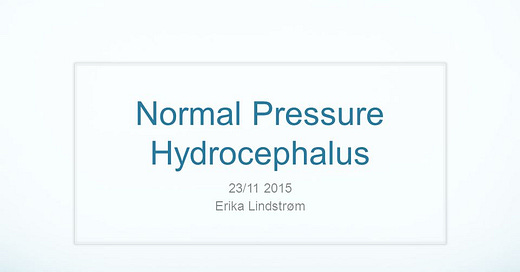This Deadly Disease is Commoner than Doctors Think. It’s Frequently Missed and Can Be Cured
February 13, 2025 by Doctor Vernon Coleman
Around the world there are estimated to be nearly 50 million people suffering from dementia or Alzheimer’s disease. One half of all the patients admitted to nursing homes are suffering from dementia of one sort or another. Millions of other patients who have been diagnosed with dementia of one kind or another are being looked after by their families. Many family members have had to abandon their jobs and their normal lives in order to find the necessary time. Millions more patients have been dumped in hospitals and nursing homes where they sit or lie, waiting to die. No one knows how many millions of undiagnosed individuals are struggling to cope with dementia, either alone or with the help of relatives, friends and neighbours.
Despite many promises there is still no cure for dementia or Alzheimer’s disease, nor is there any sign of one, but there is clear evidence that many so-called dementia sufferers are actually suffering from something quite different – a health problem which can be cured.
Most cases of dementia cannot be treated (though there are a number of things which can be done to slow down the pace at which the disease develops) but there is one particular cause of dementia which can be treated: idiopathic normal pressure hydrocephalus.
If a friend or relative is diagnosed with dementia then you should not accept the diagnosis until doctors have confirmed that the patient is not suffering from idiopathic normal pressure hydrocephalus – a disorder which is commonly misdiagnosed as Alzheimer’s disease, dementia or Parkinson’s disease. It is important to rule out idiopathic normal pressure hydrocephalus because this disorder can be treated. And if the treatment is started early then the outlook is good.
Idiopathic normal pressure hydrocephalus is bizarrely under-researched, under-diagnosed and under-treated. There is almost certainly no disease affecting large numbers of people which is less understood.
Doctors certainly do not take the disorder as seriously as they should. Within the medical profession it is known (when it is known at all) as the ‘wet, wacky and wobbly disease’ – more a childhood term of abuse than a phrase redolent with respect.
Organisations which specialise in caring for the elderly are often appallingly ignorant about the disease, as are health websites.
On the internet, I asked the questions ‘Why are old people unstable?’ and ‘Why do old people fall so often?’ and none of the first several dozen responses mentioned ‘idiopathic normal pressure hydrocephalus’. In the UK, the NHS Choices website devotes less than 70 words to the disease and describes the condition as ‘uncommon’ which is manifest nonsense since it affects millions and is undoubtedly the commonest treatable cause of major disability and mental incapacity among the elderly.
Researchers are not interested in investigating the disease because a cure is already available and, since there is no need for a ‘wonder drug’ there are not going to be any big, fat grants from drug companies. And doctors are not interested in diagnosing or treating the disease because it invariably involves older patients, and doctors are encouraged by governments (and much of society) not to take much interest in elderly patients.
If you made a list of the 100 commonest, potentially fatal but most easily cured medical conditions which are most often mistakenly diagnosed as something else, then idiopathic normal pressure hydrocephalus would be top of the list.
There is no doubt that a large percentage of the patients who are said to have died of Alzheimer’s disease were suffering from normal pressure hydrocephalus. Alzheimer’s disease causes dementia and a loss of mental abilities but (despite the fact that it is officially regarded as a major killer – in the US it is said to be the fifth commonest killer of people over the age of 65) there is no real reason why Alzheimer’s disease should result in death. When patients are said to have died of Alzheimer’s disease, or some other form of dementia, they will have usually died of pneumonia or some other infection which has been deliberately left untreated. A patient who has genuinely died as a direct result of their dementia, without an infection or any other complication, will have probably died of idiopathic normal pressure hydrocephalus which was not diagnosed but which caused death by compressing, damaging and destroying many different parts of the brain.
The only things we know for certain are that idiopathic normal pressure hydrocephalus is terribly common, it produces devastating results, it is usually mistaken for something else and it is treatable. Patients who have been stuck in bed or in wheelchairs can, after treatment, get up and walk. They can resume their lives; talking and enjoying work and hobbies. Patients who have been abandoned have their lives back again.
A diagnosis of dementia (whether Alzheimer’s or any other variety of dementia) can be devastating to a patient and to family and friends. But that diagnosis is often wrong. And if the correct diagnosis is idiopathic normal pressure hydrocephalus then the true cause of the dementia is treatable.
Between five and ten per cent of all individuals diagnosed as suffering from Alzheimer’s Disease or dementia have been misdiagnosed and are suffering from normal pressure hydrocephalus; a disorder which can produce similar symptoms – but which can be treated.
Taken from the book `When Dementia Can Be Cured’ by Vernon Coleman. To purchase a copy please CLICK HERE
Copyright Vernon Coleman February 2025





Thank you Edwin 💥🎯
100% spot on !! My elderly aunt had this and her son let her die with this . He’s a disgusting person.